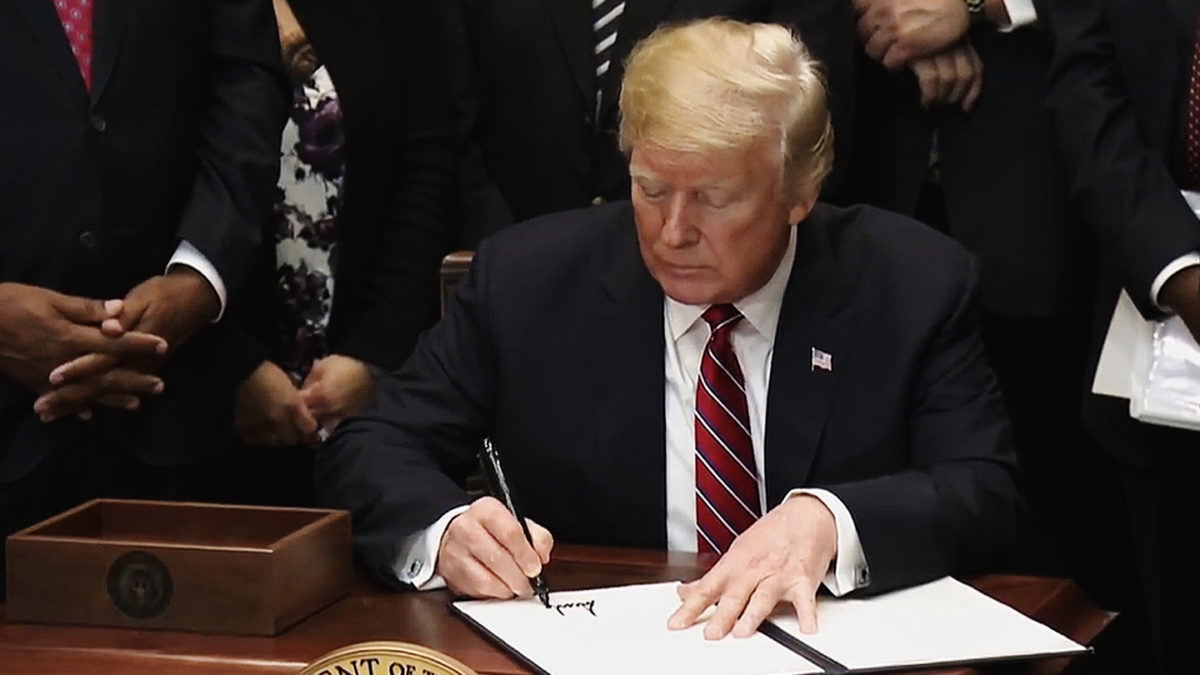Opportunity, so they say, knocks ”” and when it comes to Fairfield County”™s 17 designated Opportunity Zones, the federal government may soon be knocking with more money.
On Dec. 12, President Donald Trump signed an executive order to establish the White House Opportunity and Revitalization Council to improve revitalization efforts by streamlining, coordinating and targeting existing federal programs to Opportunity Zones.

“Fifty-two million Americans live in economically distressed communities,” according to the executive order. “Despite the growing national economy, these communities are plagued by high poverty levels, failing schools and a scarcity of jobs.”
The program provides a federal tax incentive for investors to reinvest unrealized capital gains into Opportunity Zones through Opportunity Funds. Under the terms of the program, the governor of each state was required to submit a plan to the federal government designating up to 25 percent of the qualified census tracts in their state as Opportunity Zones, subject to the approval of the Secretary of the Treasury.
In May, Gov. Dannel Malloy announced that all 72 OZs he had nominated in 27 municipalities had received approval. Those include seven in Bridgeport, five in Stamford, three in Norwalk and one each in Danbury and Stratford.
“Promoting economic growth means we”™re investing across the board ”” in housing, in business, in transportation and more,” Department of Housing Commissioner Evonne M. Klein said at the time. “With partnerships at every level of government and in the private sector, we”™re promoting a state where residents will want to live, work and raise a family.”
The OZ program was actually created last year as part of Trump”™s $1.5 trillion Tax Cuts and Jobs Act, but had gained little traction with the public until the Dec. 12 executive order. Even so, what monies might be forthcoming from the federal government for OZs remains unclear. No dollar figure was specified in the executive order.
“The zones are a really interesting and creative idea,” Connecticut Department of Economic and Community Development (DECD) Commissioner Catherine Smith told the Business Journal. “We have been aggressively working with those 27 municipalities to do all we can to market the sites to potential investors.”
“What we”™re hoping to do is attract investors into our area to help support our ongoing revitalization efforts,” said Betsy Paynter, executive director of redevelopment agency CityCenter Danbury. “These are areas that can”™t grow by themselves ”” they need private investment.”
Paynter said the Trump announcement evinced “great timing,” as Danbury”™s Downtown TOD Planning Study, which in part will look to develop underperforming properties around the city”™s train station, is expected to be finalized this month.
Malloy”™s initial nomination of Danbury “shows how confident the state is in our downtown,” Paynter said. “We”™re looking to create a downtown neighborhood that includes retail, grocery stores, restaurants ”” the whole ”˜live, work, play”™ concept. New investments and new construction will help bring that about.”
The city, along with the nonprofit Connecticut Economic Resource Center and law firm Pullman & Comley, is hosting a free informational event Jan. 23 at the Palace Theater to provide background and analysis of the new program, as well as recommendations for those interested in working to develop Opportunity Zones.
Stamford Director of Economic Development Thomas Madden acknowledged the potential for OZs, but tempered his enthusiasm by noting that federal guidance on how to move forward was still forthcoming.
“We”™re working with our state delegates, the DECD and neighboring communities” to get the ball rolling, Madden said. “It”™s a great idea ”” we just need to see where it”™s going.”
DECD Commissioner Smith said she shared that concern.
“We”™re keen on the program, but it”™s still wanting when it comes to some of the regulations,” she said. “For real estate investors, it should be very helpful and grow pretty quickly. But when it comes to entrepreneurs, startups, etc., it”™s very unclear if the regulations will accelerate that kind of investment. We think they should.”
Smith noted that the DECD has launched a beta version of an OZ website that she hopes can officially launch in the new year.
“We are submitting official comments to (the U.S. Department of) Commerce (during the week of Dec. 28),” she said, “where we”™ll outline our concerns. Then there will be another round of discussions about regulations and guidance, which will probably take a few months. Or more, if the (federal government) shutdown continues.”
And that is not the only top-level complication involved. Amazon”™s HQ2 project in Long Island City, New York, is in an OZ ”” the company is reportedly expecting to receive up to $3 billion in tax incentives from the state ”” while both Trump and his son-in-law Jared Kushner own properties within OZs. In addition to the former”™s Trump National Golf Club, Kushner reportedly owns at least 13 properties in OZs in New Jersey, New York and Maryland.
While golf courses by their nature cannot receive OZ funding, and Kushner”™s ownership predates the OZ program”™s requirement that such properties be purchased after Dec. 31, 2017, property prices in those areas have reportedly risen sharply.



















